#Arnold chiari malformation
Explore tagged Tumblr posts
Text
@ my fellow purple ribbon friends... I've been going through the chiari reddit forum and I'm.. confused.
What kind of chronic pain do you experience? Are you only experiencing the debilitating chiari headaches or something else?
Because for me the pain pretty much radiates everywhere. The neck ofc is a given but my spine and especially my right hip/leg and left thigh are really bad and a daily occurrence.
Lately, as of the last five or so months my right shoulder and wrist have started hurting pretty much daily too.
Now I'm questioning... whether or not I should perhaps look into one of the other conditions commonly linked to chairi. Because from what I've read it seems most people are dealing with pain in the head/neck/shoulder area but that's it.
Advice?
10 notes
·
View notes
Text
Hey guys. Little update on me. I never got to go to my sleep study because I was taken to the emergency room. After hours and hours of fiascos I was diagnosed with Cerebellar tonsillar ectopia and Arnold-Chiari malformation. I was warned that I might need brain surgery. 🤕
18 notes
·
View notes
Text
September is Chiari Malformation Awareness Month!
Hi yes hello! Since many people probably aren't aware of it, I wanted to bring attention to something we ourselves have called chairi malformation at the start of its awareness month! Its recognized with a purple ribbon usually with a zipper on it (for the zipper scars of those who've had Chiari surgery)
What is Chiari Malformation?
Chiari (key-arr-ee) Malformation is a brain malformation in which the brain is too large, skull is too small, or some combination on the both, causing the cerebellar tonsils (and in some instances the brain stem) to slip through the skull and into the spinal chord.
Chiari is most typically a congenital effect. There are two main types (though they aren't the only ones). The most common of the two us Chiari 1, in which only the cerebellar tonsils are descended through the skull. The second most common, Chiari 2 (also known as Arnold-Chiari malformation) has more tissue herniation in the cerebellar tonsils and even the cerebellum, as well as brain stem herniation as well.
(See Below, the Cerebellar tonsils are marked in red while the brainstem is marked in green and yellow. This is considered a normal MRI)
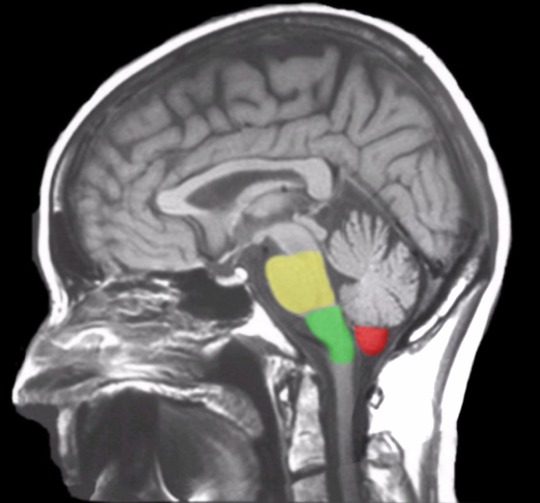
Chiari malformation is likely to occur in 1 in 1,000 people, making it uncommon but not rare. The statistics are likely to be slightly higher than that for Chiari 1, as many people don't present symptomatically (and many incidents are only found in cases where the person was receiving radiological imaging for other instances such as head injury, so many people are unaware they had Chiari to begin with).
The only way to diagnose Chiari is through radiological imaging (many arguing upright MRI specifically is the only proper way to view the real level pf herniation). Herniation is measured down from the McRae line to the lowest point on the cerebellar tonsils. Depending on the accuracy of the machine (and which imaging tool is used) herniation can appear at different levels at different times. (See below, my first MRI looks markedly less in comparison to my second MRI, which features a roughly drawn on McRae line. In the second image I was noted to have a 7-8mm herniation.)
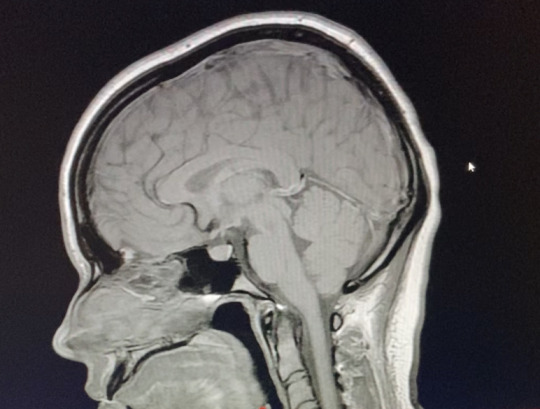
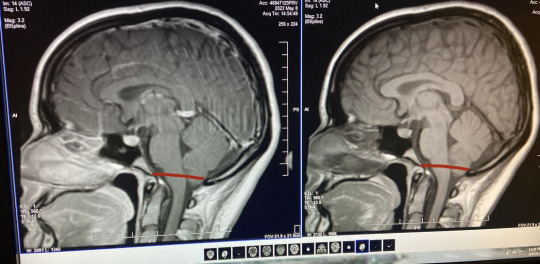
Symptoms
Chiari is marked by a number of symptoms and commorbidities, even moreso depending on the type you have. Symptoms can occur at any level of herniation. Some people with Chiari can have a 3mm descent and have debilitating symptoms, while some may have a 15 mm descent and be completely asymptomatic. The most common of these is occipital headaches & migraines, ranging from mild to severe, but many more are possible. These range from...
Balance Issues
Dizziness & Vertigo
Neck & Shoulder Pain
Difficulty Swallowing
Sore Throat
Sleep Apnea
Nausea & Vomitting
Tinnitus & Hearing Loss
Blurred Vision, Visual Snow, & Vision Loss
Muscle Weakness
Numbness or Pins & Needles (Caused by Nerve Damage)
Poor Motor Skills
Fatigue
Cognitive Difficulties (including but not limited to Brain Fog, Memory Problems, Confusion, & Difficulty Speaking)
Insomnia
Photophobia/Light Sensitivity
Syncope, Fainting, & Drop Attacks
Seizures
Dysautonomia
Since the cerebellar tonsils block the opening to the base of the skull, Chiari can halt the proper flow of CSF (Cerebral Spinal Fluid) between the brain and the spinal chord. Because of this, Syringomylia (cysts filled with CSF formed on the spine called Syrinxs) is considered common with Chiari. Other common disorders with Chiari are Scoliosis, EDS & Cervicocranial Instability, POTS, Tethered Spinal Chord Syndrome, Spina bifida, & Hydrocephalus.
So What's the Solution?
Well, the only known solution for Chiari as of right now is surgery. This surgery is called posterior fossa decompression-- in which a small portion of the base of the skull is removed from the Chiari patient to relieve pressure and give more room for the brain. The surgeon can then do for sone patients a duraplasty, in which the dura (or opening of the brain) is cut open and a patch of tissue is sewed into the incision to make the dura bigger and give even more room for the brain. Surgery can also be done as a preventative measure against syrinxes for those without them. In the case the patient also has a syrinx, more surgical procedure can be done to drain the cyst. In patients with EDS, special procedures must be made to avoid surgical complications and making things worse.
Surgery is not guaranteed to completely alleviate symptoms, but typically helps with some. However, due to large misunderstanding and disagreement on proper diagnostic traits of Chiari from doctors (most typically neurologists and neurosurgeons) many may be denied surgery for a number of years, and Chiari Diagnosis can take on an average of 4 years to officially receive.
Some go years experiencing symptoms and having "low lying cerebellar tonsils" (or similar language, such as incidental tonsillar ectopia) noted on their radiology reports without doctors officially recognizing it as Chiari. In this time many are misdiagnosed with other disorders such as chronic headaches, multiple sclerosis, fibromyalgia, and more before finally finding a doctor who will listen. Many will brush off the radiological findings as just a difference in your brain being formed at birth before admitting the symptoms can be due to Chiari. It can take years of your own patient advocacy before someone finally listens.
This is why awareness to it is so important, in hopes of reaching other people and doctors and forming a stronger understanding of the condition from information found by experts on it and those with Chiari themselves. With more awareness comes more accessibility to treatment and surgery so those who are symptomatic can hopefully find some relief. So this month send a little love & luck to those with Chiari!
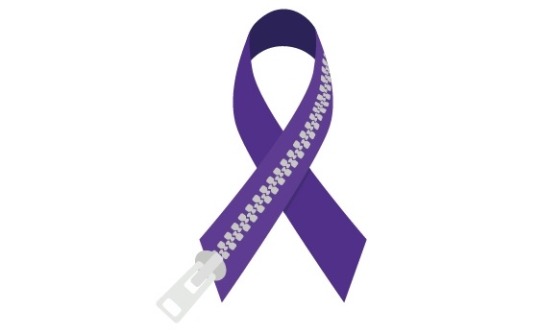
#chiari#chiari malformation#chiari awareness#neurological disability#disabled#disability#disability awareness
36 notes
·
View notes
Text
Logging on in the morning and immediately having to find answers on Arnold-Chiari malformations is literally the way to feel like you've given yourself a concussion
#Creepy chatter#Im researching the hindbrain before I have my morning snackie?? Girls.....#Anyway one of the top 10 worst documented diagnoses of all time
7 notes
·
View notes
Text
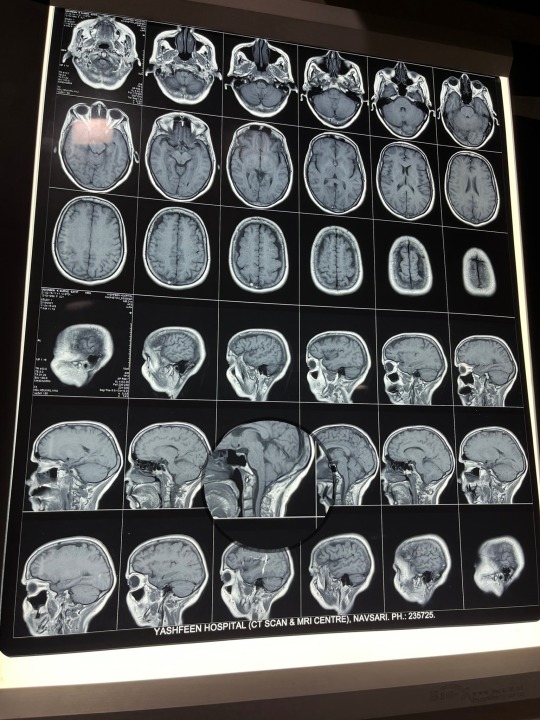
Arnold–Chiari malformation 📝
A condition in which brain tissue extends into the spinal canal, present at birth.
It occurs when part of the skull is abnormally small or misshapen.
2 notes
·
View notes
Text
When I was diagnosed with Chiari Malformation, my neurosurgeon was astounded that - as a retail employee - I'd not only heard of the condition, but also knew what it was, and how it's most often treated. One of my work colleagues was diagnosed with it several years before I was, and told me all about it when I asked. So when the doc said I had it my response was "oh I have Chiari?!" not "what's that?"
Since then I've seen a bunch of doctors about other medical conditions, and most of them had no idea what Chiari is. Explaining your medical condition to people who've studied medicine can be very entertaining, depending on the situation.
(Explanation of Chiari below the cut for anyone curious.)
If you've ever seen a human skull (thanks Hamlet!) you'll know there's a hole at the base of it, towards the back - the foramen magnum - which is how the spinal cord connects to the brain.
Many of you will have heard of the cerebellum - a part of the brain, located in the lower rear region. The base of the cerebellum is known as the cerebellar tonsils, and when they descend into the foramen magnum, that's Chiari Malformation, sometimes known as Arnold-Chiari Malformation.
There are three main subtypes, depending on the severity, with 1 being the least severe and 3 being the worst of the trio. A descent of 5mm is type 1, and can cause symptoms.
Some people with Chiari Malformation never develop any symptoms, so don't even know they have it unless they have an MRI of their brain for some other reason. Others develop symptoms from the Chiari alone, or develop either Hydrocephalus or Syringomyelia in addition, and some extraordinarily unlucky folks develop both.
Hydrocephalus is a build up of cerebrospinal fluid (CSF) in the ventricles (cavities) of the brain, while Syringomyelia is a cyst in the spinal cord. Both can be caused by the flow of CSF being disrupted by Chiari Malformation, and Hydrocephalus can sometimes cause Chiari. (Bodies are weird like that.)
My work colleague developed Syringomyelia, so she had the most common Chiari treatment - a decompression surgery, which removes a small section of the skull, with a special protective mesh inserted in its place, to give the brain more space.
I developed Hydrocephalus - my ventricles were very enlarged, and pushing the white and grey matter of my brain hard against my skull, causing agonising headaches 24/7. This being the case, I had a different surgery - a shunt was inserted to divert excess CSF, allowing my ventricles to return to a more normal size, and taking the pressure off my brain. As of my most recent MRI, my Chiari is now reduced as well.
(Apologies to @thebibliosphere that got away from me a bit.)
Sometimes I’ll read back a post where I’m casually explaining a really complex medical issue that most doctors struggle to grasp unless they’ve spent decades specializing in it, and then remember.
I have a liberal arts degree.
3K notes
·
View notes
Photo

What is Chiari Malformation? Did you know that Chiari Malformation, or Arnold–Chiari malformation, is a condition where the brain sags into the spinal canal? This rare condition comes in three types, each with its own set of symptoms. People with Chiari Malformation may not experience symptoms, especially with Type 1. Chiari Malformation is diagnosed with Imaging such as an MRI or a CT scan. Complications of Chiari Malformation include: Hydrocephalus, an accumulation of excess fluid within the brain, Syringomyelia, a cavity or cyst (syrinx) that forms within the spinal column, and Tethered cord syndrome in which the spinal cord attaches to the spine and causes the spinal cord to stretch. People with Chiari Malformation Type 2 usually have a form of Spina Bifida called Myelomeningocele. If Chiari Malformation presents symptoms it can be treated with pain and headache medications, and if needed surgery. In the most common surgery, the surgeon removes a small section of bone in the back of the skull, relieving pressure by giving the brain more room. Sources: MayoClinic.Org and NINDS.NIH.Gov [Image Description: Purple background with a black title that reads "Chiari Malformation", below reads " Chiari malformation, a condition in which the brain sags into the spinal canal. There are three types of Chiari malformation: Type 1 symptoms: headaches, neck pain, dizziness, and difficulty swallowing. Type 2 is present at birth and has a greater amount of brain sagging. Type 2 symptoms include: changes in breathing pattern, swallowing problems, quick downward eye movements, and weakness in the arms. Type 3 is present at birth. It is the most severe and the rarest. A portion of the lower back part of the brain or the brainstem extends through an opening in the back of the skull. This type has a higher mortality rate and can cause neurological problems."] recLWqMKjnvshsQFL, recsjHN43osLwQsZp
0 notes
Text
What is Chiari Malformation?
instagram
instagram
#it's not Chiari awareness month but in my life every day is Chiari awareness day so#for anyone wondering what im rambling about day in and out#chiari malformation#arnold Chiari Malformation#neurological disability#disability awareness#been following this amazing account for years on ig#Instagram
6 notes
·
View notes
Text
Another cross-stitch done. This one I dropped all my others to do because of the sibling love but for me most importantly Win is wearing a Boston, MA shirt! (Yes he was also wearing it when he saw Team at the end of episode 8 but I didn't notice until I rewatched it).
I live in MA and have had to go to Boston frequently in the past 4 years for Brain Decompression surgery due to Arnold Chiari Malformation. (I'm still waiting for the surgery there have been major setbacks/reasons for the postponement) Doing these cross-stitch pictures have helped keep my mind off of the seriousness of the surgery.
I tweeted the pic but I figured more people would appreciate it here. (@irishgreenfaery if anyone is interested lol)
This episode was so amazing and I loved every minute of it.


#love these boys so much#winwiew#brothers#between us the series#between us ep9#winteam#bounprem#iqiyi#bl drama
1 note
·
View note
Text

⛑️



🦷 BOO!
#recently helped a little bit w the funding to do bit of research bc my dear friend asked me for it since she has it so many of my friends#and I donated#🙏🏾
25 notes
·
View notes
Text
People who feel the need to clarify they see me the same as a fully abled person make me wonder if they actually do, or they just think they have to say it. Because it’s all “we accept you as you are! You’re doing well! You’re inspiring! Im here if you need anything!” Until I show symptoms that aren’t considered cute or quirky, then shit hits the fan and everybody suddenly doesn’t want to hear it and I’m bullshitting. It’s exhausting.
I don’t want to be an inspiration, I’m not a great influence. I admit it, I don’t sugarcoat it. I’m tired of being held on some pedastol when it’s convienent and then reminded I’ll never be “normal” five seconds later.
#Disabled#ratfeelings#ratblood#chronically ill#chronic illness#chiari malformation#tethered spinal cord#tethered spinal cord syndrome#Arnold chiari malformation#ACM#CM#Autoimmune#Chronic pain#i’m tired#im so tired
60 notes
·
View notes
Text


Not to brag, but I only weighed 34 pounds in these pictures 💁🏼
It may seem like a life you want, but as u can see, there is no ✨sparkle✨in my eyes 😔
Sure, I weighed less, but there was also something Deeply Wrong with my 🧠brain🧠
#hi this is a JOKE#I was literally 4 years old#ed recovery#Ed recovery meme#satire#arnold chiari malformation#chiari malformation#mri#mri film#body horror#body horror cw#blob#childhood
14 notes
·
View notes
Text
The Arnold Chiari blogs: How my condition affects me today.
In my final ACM blog, I’ll talk about how my condition affects me today & what it is like to live with a Chiari Malformation. The first thing to remember is that ACM can affect every single organ and process in the human body. This is largely because the cerebellum & the brainstem are compressed in ACM and they control the nervous system & motor skills. Also, seeing as I was born with a malformation (left undiscovered until I was 18), it’ll have affected my body’s creation & subsequent ability to cope with growth & age, so I will not have evolved in the same way as someone with a Chiari Malformation. Most of the ways that I am affected by ACM today are “invisible”, as in they are internalised, so I consider myself very lucky for this fact. I know that this is not always the case with ACM, especially those who also have hydrocephalus (again, like me) so I count my blessings that more often than not, people can’t tell there is anything physically wrong with me unless I tell them about it. The only outward signs of my condition are very subtle and are centred around my mobility. I do have a slightly unusual gait when I walk & I can be clumsy/not pick my feet up enough when walking at times, but this has always been the case, so I don’t know any different. I can get self conscious about this, especially if I’m having a day where I feel ‘under the weather’, but I always counter it by thinking ‘if someone has an issue with how I am moving, all they have to do is ask and I’ll tell them why that is’. I have nothing to be ashamed about with my condition, after all. Additionally, my overall balance is not too great (never has been) and stairs are not my friends. I try and avoid stairs if I can, especially out in public, but if I have to use them, I have to make sure I can access a support (like a handrail) to help me up or down them. It is physically impossible for me to navigate them without. Another symptom I have is sudden bouts of dizziness...these days, it seems to happen more so when I move from a sitting position to standing. More than half the time, I experience about five seconds where I feel lightheaded, my vision can be compromised and I have to steady myself on something nearby. It happens very quickly and disappears just as quickly too, but it is unpleasant and disorienting. Along with this, my coordination can be slightly off centre too. Again, this has always been the case, even from being a very small child, so I don’t know how to be any different. I do believe that as I get older, my symptoms will increase in number and severity and I have read research that backs up my line of thinking, but I am prepared. Especially after turning 30, a lot more happened in a short amount of time and has resulted in some of the conditions that I find myself living with now. Some may have been down to circumstances, but I believe the vast majority of them are down to ACM and how my body compensates for it & tries to handle the handicap as I get older. Arnold Chiari Malformation can be incredibly destructive, both to the body and mind, but there is a whole spectrum of ways in which it can present itself and an important thing to do when living with such a condition is to accept your limits, but do your very best *within* them. I can’t exercise as much as I would like to and there are certain kinds of exercise I can’t undertake because of the brain surgery I had as well as disproportionate weakness in certain parts of my body (my knees being a big problem), but I can still exercise with planning and caution. I’ve learned to monitor how I’m feeling & whether I can exercise - even just for five minutes - without leaving myself too tired to do other things the next day. It involves taking a lot of baby steps towards the end goal and often, an infuriating amount of restarts to the attempt, but I get there.
4 notes
·
View notes
Text
20 odd years ago I gradually lost sight in my right eye over a week, after visiting a doctor, optometrist, and ophthalmologist, I ended up at a neurologist who asked if anything had changed recently.
I ummed and ahhed for a bit before finally going "Oh, I guess my toilet headaches have gotten worse tge last month or so."
That stopped him doing what he was doing and he asked me to elaborate. "You know, when you sit on the toilet and it feels like your brain is going to explode for a couple of seconds? The pain is lasting longer."
Turned out a recurring pain I had all my life was not something anyone else had. I thought i was a wuss and everyone could stand the pain better than me, but instead I have an Arnold-Chiari malformation and my cerebal tonsils were being squished when I sat a certain way. After an operation I'm fine now, but even after all this time I'm amazed with no pain in my head when sitting.
This isn't aimed at any one person, more of a general observation from my comments/inbox over the last few years, but the number of people who say things like "but that's normal" when I describe hypermobility compared to the number of times healthcare providers look at me like I'm a glitch in the matrix is a Ven diagram made up of a single circle at this point.
Like I feel like some people just aren't envisioning the things I'm describing properly and are imagining a normal range of motion, but I also think some of you might want to consider getting evaulated.
Especially when you send me messages like, "There's nothing wrong with me except for my debilitating joint pain, crippling exhaustion, and the fact that blood shoots out of my eyes once a month, but isn't it normal to be able to do X?"
4K notes
·
View notes
Text
I don’t understand how my mother-in-law’s lack of understand of how my multiple chronic illnesses and a doctor’s encouragement to file for disability does not make me disabled. (just because the government doesn’t say so.)
This woman, who has crohn’s disease and a colostomy bag, is basically implying that I get a job since my husband is laid off from work. The last time I had a job, I worked from home and almost died because they nearly had to stop my heart. ( I had a HR of 191.)
You think she’d understand, but no.

#spoonie#chronically ill#chronic pain#chronic fatigue#pots syndrome#fibro#fibromyalgia#chiari#arnold chiari malformation#ableism#disability#disabled
7 notes
·
View notes
